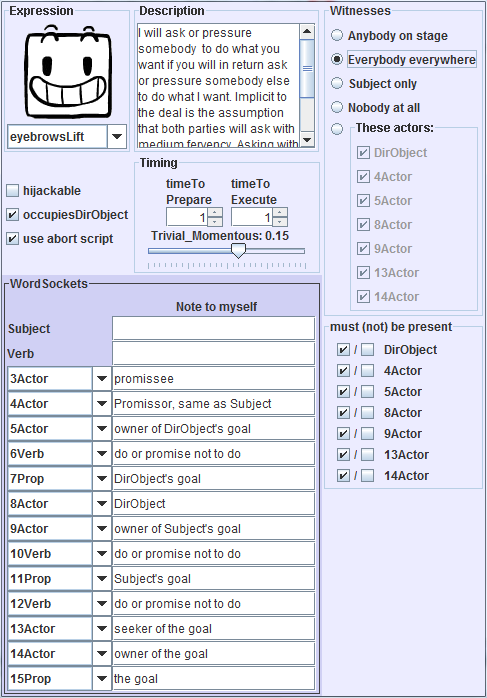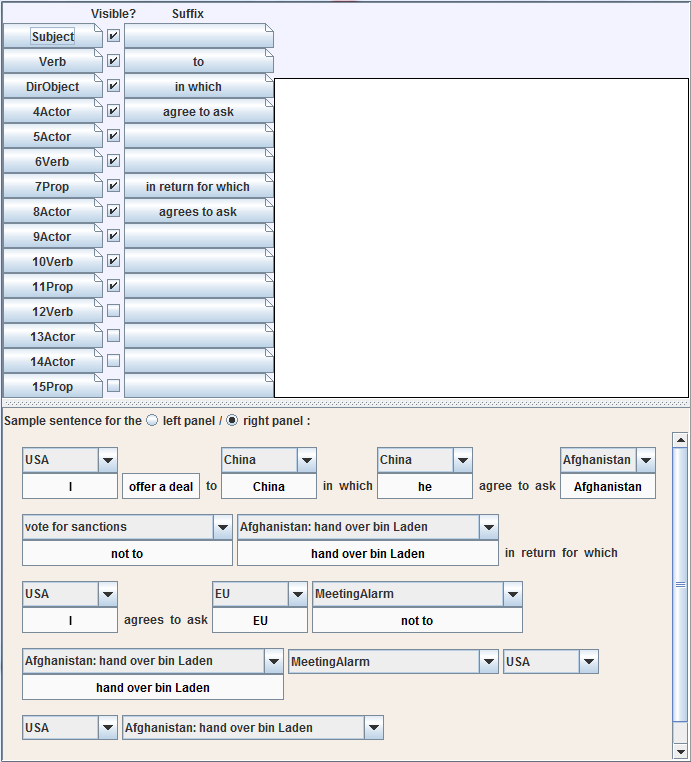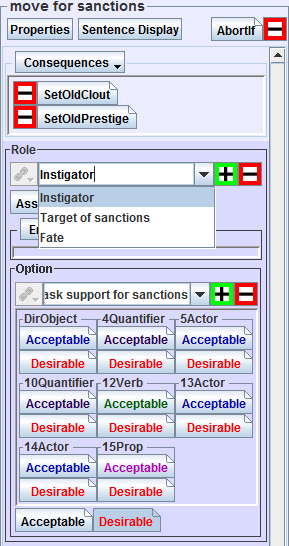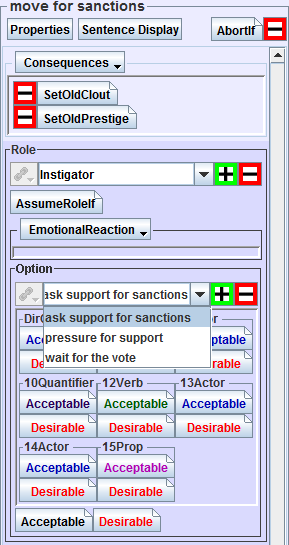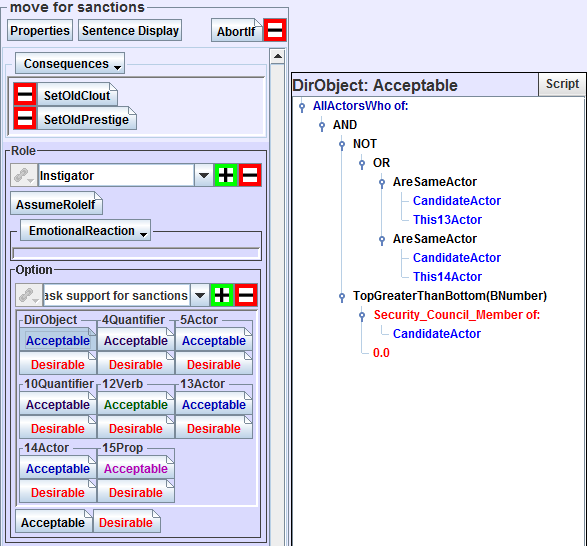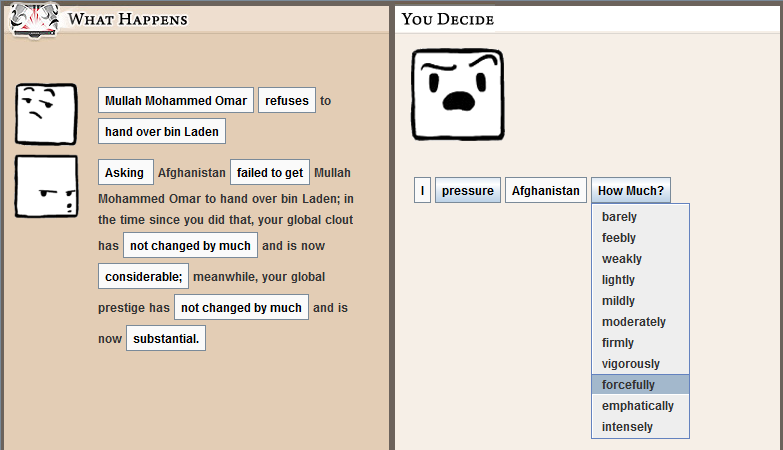Storytron
IRIS Wiki - IS Systems - Storytron
Contents
Availability
Homepage of Storytron: http://www.storytron.com
At the time of writing (Jan. 2012), the StoryWorld Authoring Tool "SWAT" and the playable example "Balance of Power - 21st Century"are not available anymore for download.
Technical Description
The Storytron system is character based and contains the following components:
- Storyteller - plays the storyworlds
- Deikto - a simplified version of the english language used by the player
- SWAT - the Storyworld Authoring Tool to create and edit storyworlds, it contains editors for Verbs, Actors, Stages, Props, Relationships and Operators
- Sappho - a scripting language used by the author
The stories have to be created with SWAT, which can be done offline. But to play them you have to be online to connect to the server.
The central concept of Storytron is the definition of actions which are called verbs. With the verb as the core element, a sentence is created around it by adding other word sockets like actors, props, stages and more. The result is a simplified version of the english language, called Deikto. By adding suffixes to the word sockets Deikto sounds more natural.
The pictures below show the properties window of the verb "offer a deal" and the corresponding sentence display editor.
A story is defined as a sequence of events that always include a verb. When the story engine has to execute an event, each actor receives a set of reactions to that verb, the set is called role, a single reaction is called option. To assume a role, the actor has to meet its conditions. An option is another verb with the specifiation of rules to fill the word sockets of the corresponding sentence and inclinations to perform that action.
The pictures below show three different roles for the verb "move for sanctions" and three options (verbs) for the role of the "Instigator".
All computations, e.g. for conditions and inclinations, are done with Sappho, a graphical scripting language that structures the script in a tree-like manner.
The picture below shows a script that will provide a list of the possible actors that will fill in the direct object word socket of the previous example.
Result Description (end user perspective)
In the official example storyworld "Balance of Power - 21st Century" the player assumes the role of the president of the United States after the incident of 2001-09-11. He plays inside a "geopolitical strategy storyworld" and has to advance american interests by interacting with the leaders of other countries. Therefore he has a wide range of interactions like setting goals, offering deals or asking other countries to do something he likes.
All interactions are initiated by the use of Deikto. The player has to create sentences and can choose from many predefined options. After the sentence is finished, the reactions are shown.
The whole system is text-based, but can show pictures for illustration and pictograms for the mood of other countries (actors).
The picture below shows the users expercience of the story. On the left the last story events are displayed, on the right the user creates a sentence with Deikto by chosing alternatives from a drop down menu.
Strong Points
Storytron potentially offers a huge variety for authors to define dramatic acting situations, in which complex contextual information can be taken into account (as preconditions) to differentiate between meaningful alternatives. The potential actions of end-users (player-actors) and virtual characters are defined in the same way and are (theoretically) interchangeable. The Deikto interface provides a representational level with symmetric balance of end-user input and system output, as both is being represented in the same toy language.
Limitations
Potential authors face a huge learning curve due to the system's complexity. (This circumstance, as a real-world experience, is true for most of current IS systems, if provided with an authoring tool or not.) Using the own words of the system's creator, many concepts are counterintuitive, because of some necessary "backward thinking".
The potential levels of expression and representation of actions are limited to the use of the Deikto "linguistic toy interface".
Main Publications
There are no scientific publications on the Storytron system.
Useful information can be found on the Storytron homepage and in the wiki.
Parts of the technology behind Storytron are derived from Erasmatron (1998). Some of Chris Crawford's design concepts and ideas regarding Erasmatron can be found here. The main publication of Erasmatron is:
- Crawford, C. (1999). Assumptions underlying the Erasmatron interactive storytelling engine. In Papers from the AAAI Fall Symposium on Narrative Intelligence, Technical Report FS-99-01. AAAI Press, Menlo Park, 112-114.
Supporting Narrative Theories
None.
Computational Model
-
